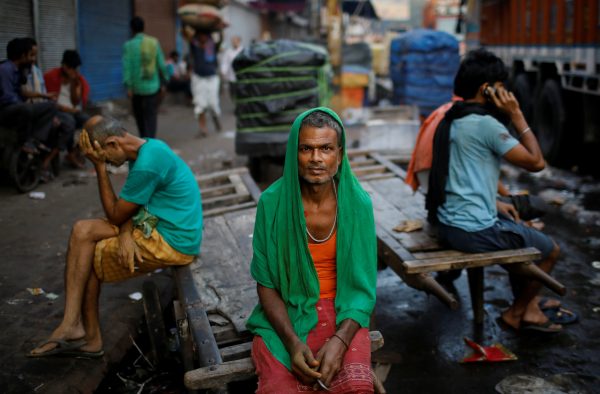But there is criticism that cases are underreported because of the unilateral reporting from government centres.
India’s relatively low number of COVID-19 cases could be because of its border control practice of screening passengers. Measures including early closure of borders for air passengers from affected countries and barring visitors from selected countries might have helped control the spread of the pandemic. India also has a lower rate of air traffic compared to China and the United States. India carried 4 per cent of all air passengers in 2014 compared to China’s 14.5 per cent and the United States’ 21.1 per cent. The government and media’s initiative in spreading awareness about the virus, including hygiene practices, might also have contributed to these low numbers.
But the majority of screening has been done in airports and testing is only done in government centres for symptomatic cases and those with a history of travel to foreign countries. In a country with large internal migration, high population density and where a large proportion of healthcare is provided by the private sector, these numbers are questionable. The government health sector usually serves the poor and lower middle class section of society. Most cases discovered are among those who have a travel history, mostly from the middle and upper class.
India is now moving to stage three of the epidemic curve and a country-wide self-isolation for 21 days has been imposed. Expansion of testing to asymptomatic cases is needed to understand the full scale of the pandemic.
Increased policy measures will be critical to contain the spread.
Public health expenditure in India is low — just above 1 per cent of GDP. The demand for healthcare is fulfilled by the private sector (contributing to 4.8 percent of GDP). Nearly 80 and 60 per cent of individuals seek outpatient and inpatient care through the private sector, respectively. The private sector contributes to an estimated 74 and 60 per cent of hospitals and hospital beds respectively. More than 80 per cent of doctors and 70 per cent of nurses and midwives are employed in the private sector.
These statistics show that participation from the private sector is crucial. However, there is a mistrust between the public and private sectors when collaborating on health programs and engagement has been below par. The government’s efforts to engage the private sector in disease surveillance programs have been met with little enthusiasm and criticism in the way private providers were handled.
The COVID-19 pandemic is an opportunity for the government to engage the private sector as testing is expanded to those without travel history and asymptomatic cases. In the event of suspected community transmission, the Prime Minister’s insurance scheme, where more than 19,000 private health hospitals have been empanelled to expand healthcare access, will be utilised well.
The most widely used law regarding pandemics in India was enacted during British rule. The Epidemic Diseases Act, 1897 has been enforced for COVID-19 but has outdated scope to handle emergencies of this scale and complexity. For instance, most of the Act constitutes border restriction in water-based ports which were a common mode of transport 70 years ago. Modes of transport have changed widely and there have been no amendments to reflect this.
Four other legal frameworks are also currently in place but a recent review found that they are not sufficient to cover the necessary aspects of pandemic management. A draft Public Health Bill is still under consideration. The parliament and law makers should utilise this opportunity to discuss and pass this bill without delay to empower the state and central governments to take necessary actions to curtail the pandemic.
The current efforts of the Indian government to contain the COVID-19 pandemic have been fruitful so far but there are fundamental challenges ahead in health infrastructure. The greatest of those challenges include the engagement of the private health sector and the implementation of updated laws governing public health. The COVID-19 situation provides an opportunity to improve Indian healthcare and future-proof pandemic laws, and in turn flatten the epidemic curve.
Padmanesan Narasimhan is a Lecturer at the School of Public Health and Community Medicine, The University of New South Wales. He is a doctor of medicine specialising in infectious disease transmission, health management and international health systems.
This article is part of an EAF special feature series on the novel coronavirus crisis and its impact.

